The special exhibition “Sudo Reiko: Making NUNO Textiles” was held at Marugame Genichiro-Inokuma Museum of Contemporary Art (MIMOCA) from Sunday, October 8 to Sunday, December 10, 2023. This exhibition was originally organized and held at CHAT (Centre for Heritage, Arts and Textile) in Hong Kong in 2019. After touring Europe, it had its fifth opening at MIMOCA. Although a traveling exhibition, it featured two new works by Sudo viewable only in Marugame, when staged at the MIMOCA venue. In this writing, I will introduce one of them, 80 Faces.
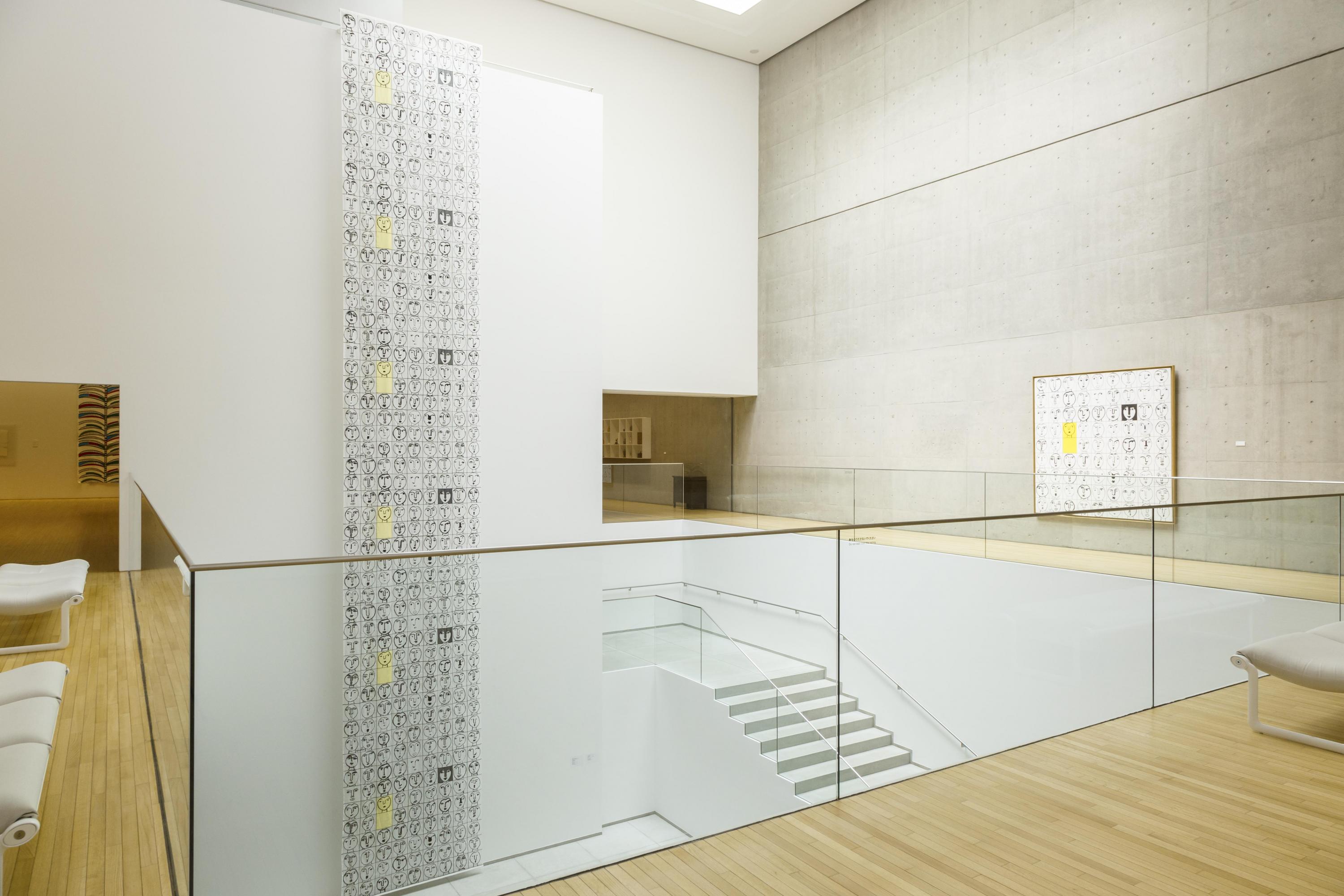
Left: Reiko Sudo, 80 Faces, 2023 Right: Genichiro Inokuma, 80 Faces, 1989
photo by Manami Takahashi
◎ The 2nd new work 80 Faces in the Entrance Hall
After gazing our fill at Big Pastel Drawing fluttering in Gate Plaza, we at last enter the museum. As we walk to the right of the reception desk, the space suddenly opens into an atrium filled with soft natural light spilling from a skylight. The bright, open atrium of the entrance hall is a beautiful space symbolic of Genichiro Inokuma's vision of MIMOCA: "An art museum is a hospital for the heart and mind." For this space, Reiko Sudo has created a new tribute work to Inokuma.
As her motif, Sudo has chosen Inokuma's painting 80 Faces (1989). When his beloved wife died in his later years, Inokuma began to create a series of faces, thinking that if he painted people's faces, his wife's face might eventually appear from his brush. When visiting MIMOCA in preparation for this exhibition, Sudo felt deeply impressed by the painting and the story behind it. 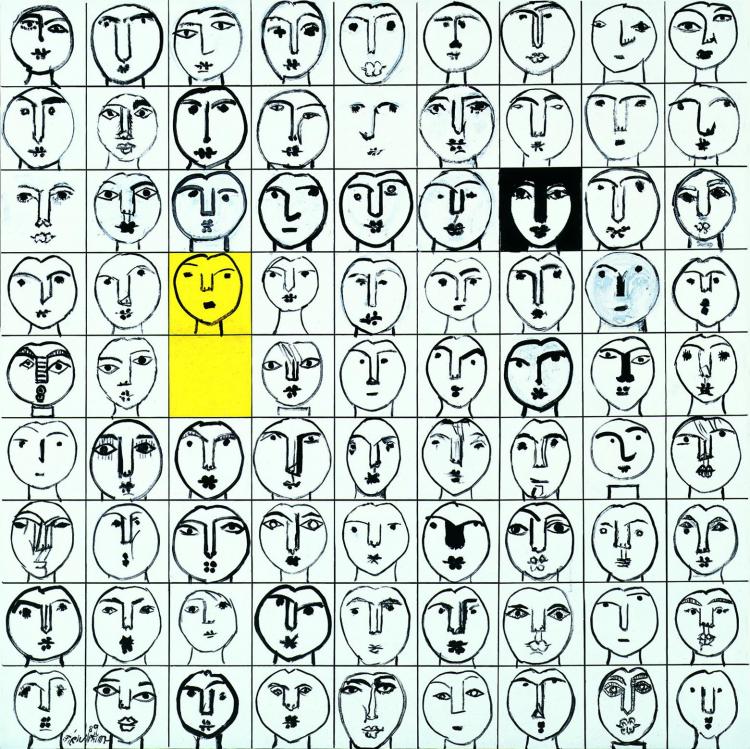
Genichiro Inokuma, 80 Faces, 1989 ©️The MIMOCA Foundation
Sudo chose machine embroidery as her medium for expressing this line-drawn painting. Just as with her other new work, she began by creating digital data from the original image. Working with the engineer, she eliminated from scan data all but the lines that would be embroidered, then adjusted the jagged corners of a large number of square pixels, one by one, while increasing the image's resolution. Her labor of creating 80 Faces involved a process of tracing lines drawn by Inokuma, so she felt as if she were copying his work and, simultaneously, as if creating a work collaboratively with Inokuma.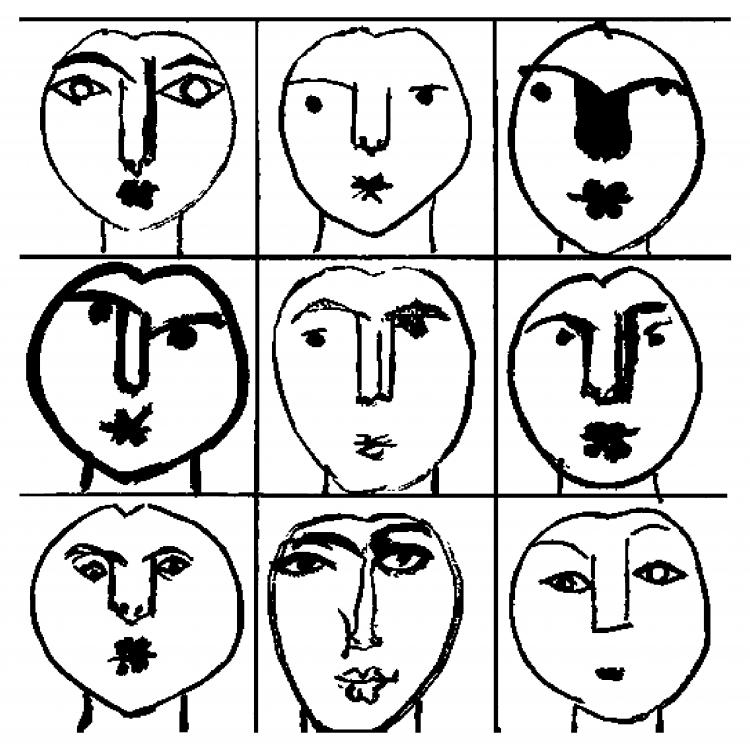
Adjusted digital data (one portion). Photo courtesy of NUNO Corporation
Based on Sudo's adjusted digital data, the embroidery factory team created data that directed the movement of the machine embroidery needles. The faces in the original painting are almost entirely solid black line drawings, yet the artist's lines are not drawn uniformly. They display features of all kinds, growing wider and growing thinner, and growing thick with paint and growing thin and faint. Such linear variations had to be expressed in embroidery using a single thread; that is, "single brush stroke" embroidery. The embroidery factory team's data creation also involved a process of tracing Inokuma's lines. Thus, in Sudo's new work 80 Faces, the artist Inokuma was twice brought into collaboration.
Digital data creation at the embroidery factory Photo courtesy of NUNO Corporation
The maximum size of fabric that could be embroidered with one machine was about 60cm x 60cm. The grid square for one face was accordingly set at 20cm x 20cm in size, and Inokuma's painting, 9 squares high and 9 squares wide, was divided in fabric pieces 3 squares high and 3 squares wide. For these 9 fabric pieces, 9 different designs of embroidery were created and the embroidered fabric pieces stitched together to create one 80 Faces. This process was additionally repeated 6 times to complete an 11.1-meter-long textile filled with 480 faces, hanging from the top to bottom of the atrium wall.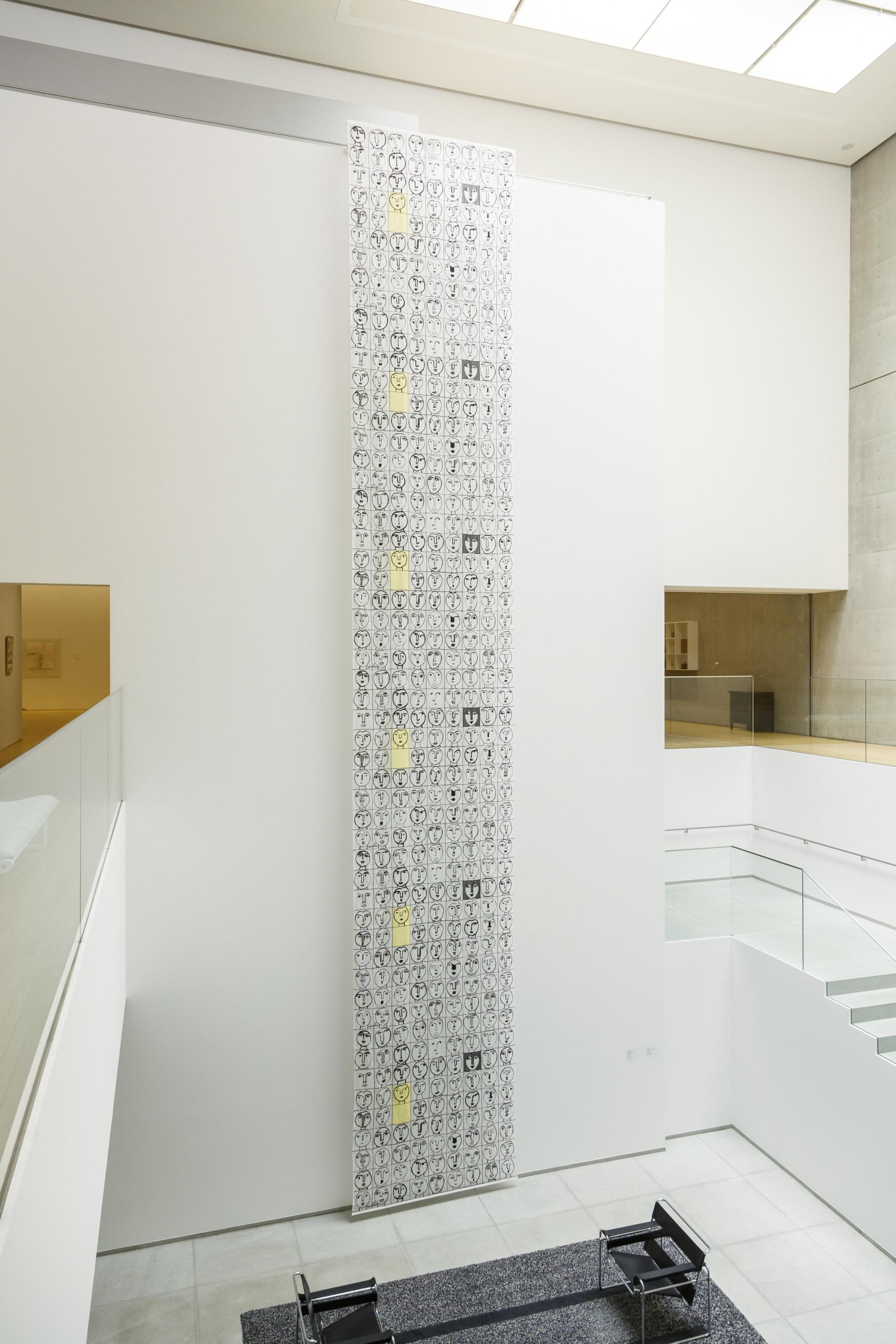
Reiko Sudo, 80 Faces, 2023 photo Manami Takahashi
In passing, the grid lines of Inokuma's painting were also faithfully reproduced using embroidery. The textile is in fact pieced together along the lines, but most visitors do not notice the seams. The beauty of the sewing also adds to the finish of the work.
Then, we tend to think of textiles as being two-dimensional. Nevertheless, each fiber making up a textile in fact has fullness, regardless of how fine, and a completed textile furthermore derives three-dimensional character from the unevenness and thickness of its threads. Designing textiles includes this aspect of three-dimensional formative expression. In places where paint was thickly brushed on, in the original painting, the embroidery of 80 Faces uses a lot of thread and achieves thickness. Where the paint is thin due to quick brushstrokes, there is less thread and the embroidery is thin. The original painting's shading, and the speed of the artist's lines, is expressed three-dimensionally by filling in the embroidery thread thickly or thinly. When viewing the textile, be sure to approach it and take a close look. You are certain to sense the richness in the thread's expression.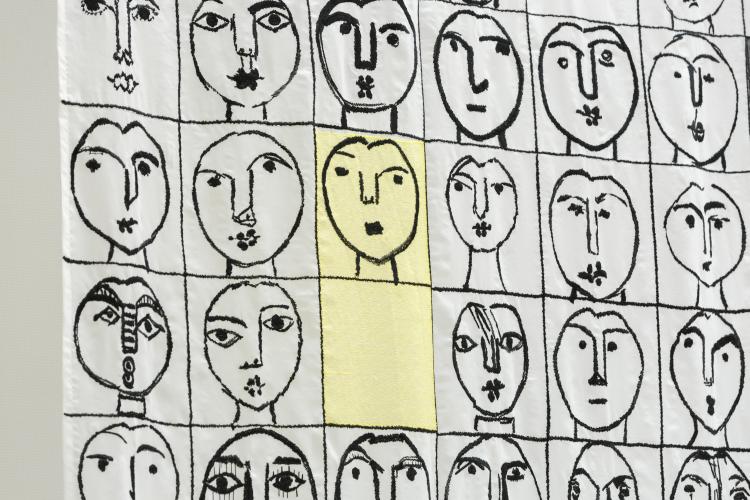
Reiko Sudo, 80 Faces, 2023 (partial) photo Manami Takahashi
If we think about it, Inokuma's original painting is also a two-dimensional work, yet its paint too has thickness, and the canvas supporting the painting is a textile having three-dimensional character due to the thread's thickness and the roughness of the weave. In this sense, Sudo's 80 Faces enables a somewhat different perspective on Inokuma's 80 Faces than usual.
The textile 80 Faces was hung 20cm away from the wall. The base fabric is a sheer white organza like that of the Sudo work in Gate Plaza. The fabric is embroidered with black thread and, in portions, with yellow thread. In the evening when it grows dark outside, light striking the textile diagonally from second floor gallery spotlights grows brighter than natural light from the skylight. With this, its embroidered portions project faint shadows on the wall and a beautiful light painting appears, like shadows from stained glass in a church, in the most beautiful space at MIMOCA.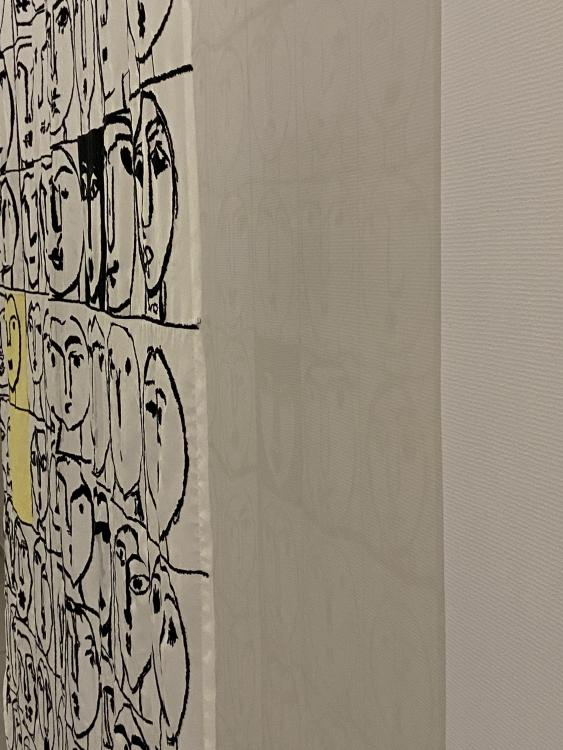
Reiko Sudo, Genichiro Inokuma collaborative work, 80 Faces, 2023
Design: Reiko Sudo
Production: NUNO Corporation
Embroidery Production: Kasamori Corporation
